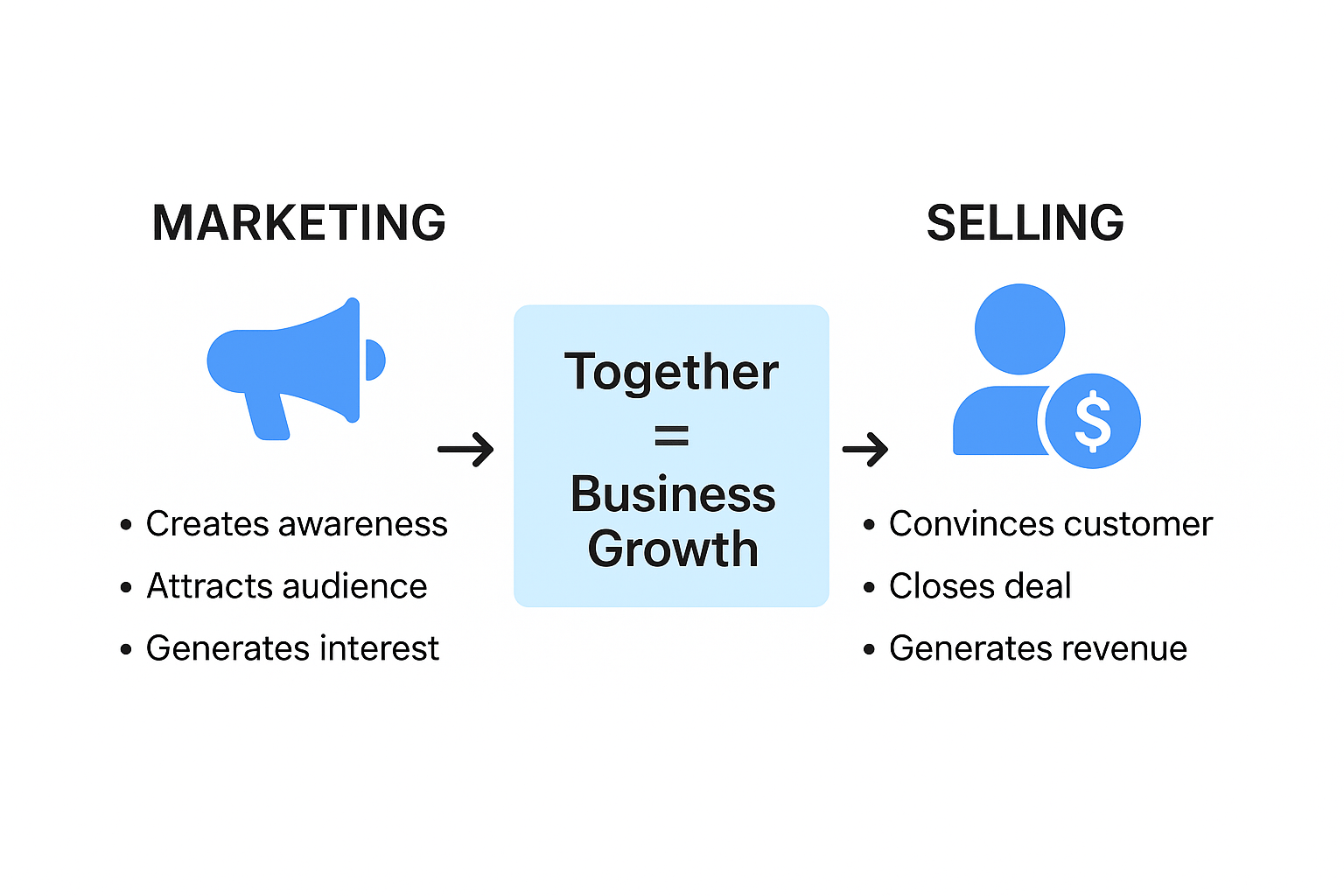Most people assume that marketing and selling are the same thing - but they are actually quite different. In reality, Selling is just one part of Marketing. This blog lists down all the key differences you need to know about selling and marketing.
What is Marketing?
Marketing is a strategic approach of understanding what customers want, and creating data-driven strategies to reach, engage, and retain customers. It’s a long term game that tends to focus on creating brand awareness, demand and not just selling products.
The core elements of marketing are -
- Customer-Focused: understanding the needs of potential customers.
- Trust-Oriented : Marketing helps build trust and credibility.
- Relationship : helps businesses create long-lasting relationships with their potential customers.

What is Selling?
Selling is a transaction between the brand and the buyer where the product or service is exchanged for money. The goal of a selling is to generate revenue rather than creating interest towards the product or service.
The core elements of selling are -
- Product Centered: highlights product features and benefits over customer needs
- Transactional: focuses more on selling products rather than connecting with the customer.
- Goal-Oriented: complete focus on closing the sale and making revenue.
It’s a direct interaction between the two parties where the seller convinces potential clients to purchase a product or service by clearly communicating the value it offers and addressing their needs; this is called selling in marketing.
15 Key Differences Between Selling and Marketing
| Aspect | Marketing | Selling |
|---|---|---|
| Definition | A holistic approach that demands research, organizing, execution, and risk management for the brand’s success | A single-objective approach to persuade customers to purchase a product/service by paying the charged amount. |
| Goal | Cater to customers’ needs and build a relationship | Maximize the number of sales and profitability |
| Concept | Study the needs and wants of customers | Offer products/services to customers to increase sales |
| Focus Area | Customer-centric approach | Product/Service-centric approach |
| Scope | Wide and Evolving | Concentrated |
| Key Components | Brand Awareness, Engagement, Customer Retention, Sales | Sale of a particular product/service type |
| Strategy | Integrated marketing efforts using different channels | Use of a few channels relevant to the sales campaign |
| Funnel Stage | Covers all stages of the marketing funnel | Covers only the purchase/sales funnel stage |
| Audience Type | Broad and Segmented | Specific and Narrow |
| Campaign Type | Brand Awareness, Engagement, Lead Generation, App Installs | Conversion Campaigns, Shopping Ads |
| Duration | Long-term | Short-term |
| Customer Interaction | Indirectly, through ads, social mentions, and comments | Directly, through calls or messages |
| Success Measurability | Traffic, Ad clicks, Sales, Positive Reviews | Product/Service bought or order placement |
| Types | Content, Social Media, Email, Influencer, Brand Marketing, etc | B2B, B2C, Inbound, Outbound, Consultative, Partnership Selling, etc |
| Example | Social media ad for a customer who showed interest in the laptop | Laptop purchase from an electronics shop |
Also Check: Scope of Marketing
How Marketing and Selling Support Each Other
Marketing and Selling are not enemies of each other. They're incredible when together. They both work like two sides of the same coin.
Marketing creates awareness, attract the audience, and makes them interested in the product. Selling then convince the customer to buy. Without marketing the salespeople will not be able to get enough leads to convert and on the other hand, without selling marketing efforts will not bring money.

Final Thoughts
Businesses tends to make better decision when they're clear how selling differs from marketing. Businesses that strategize sales and marketing efforts get better results. As Sales team focuses on closing sales and marketing team focuses on creating long-lasting impact on potential customers.
Smart Businesses don't rely on one thing. They use both selling and marketing strategically to drive better revenue growth and large strong customer base.
